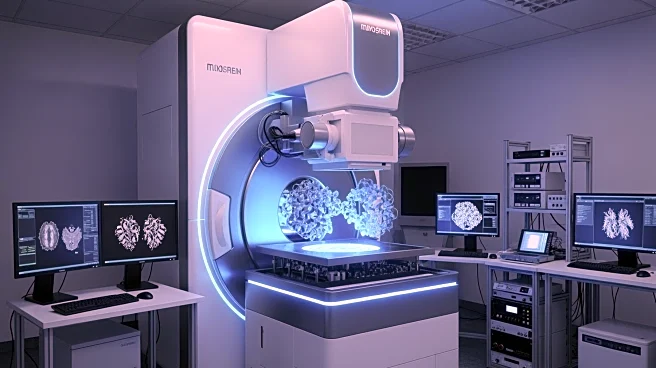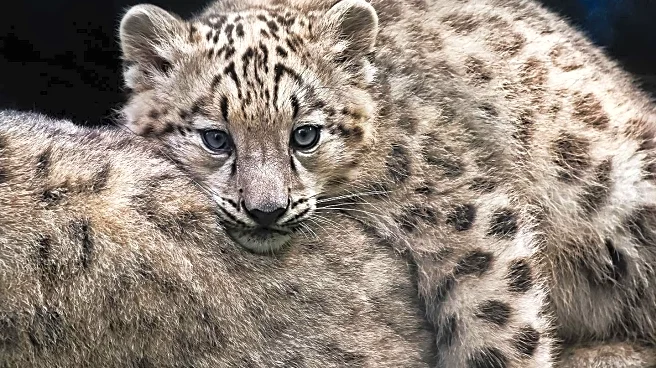What's Happening?
Rèbecca Kleinberger, an assistant professor at Northeastern University, is pioneering research aimed at improving animal wellbeing through technology. Her work began with a project involving a hyacinth macaw named Sampson at the San Diego Zoo, where she
developed a device called the Joy Branch that allowed Sampson to interact with music. This project led to the establishment of the INTERACT Animal Lab, which focuses on creating technology to enrich the lives of various animal species, including pets, zoo animals, and farm animals. Kleinberger's research includes projects like touchscreen games for parrots and a parrot-to-parrot video calling system, which have shown potential for animal enrichment.
Why It's Important?
Kleinberger's work is significant as it represents a shift in how technology can be used to benefit animals rather than just humans. By focusing on animal enrichment, her research could lead to improved welfare for animals in captivity and domestic settings. The development of such technologies could also influence public policy and industry standards regarding animal care, potentially leading to more humane treatment and better living conditions for animals. Additionally, this research highlights the ethical considerations of using technology in animal welfare, emphasizing the need for collaboration with accredited institutions to ensure high standards of animal care.
What's Next?
Kleinberger plans to publish her research findings in the coming months, which could provide further insights into the effectiveness of these technologies. As her lab continues to develop new tools, there may be increased interest from zoos, pet owners, and the agricultural industry in adopting these innovations. The success of these projects could also inspire further research and development in the field of animal technology, potentially leading to new applications and improvements in animal welfare practices.
Beyond the Headlines
The ethical implications of using technology for animal welfare are a key consideration in Kleinberger's work. Her approach challenges traditional methods of animal interaction and highlights the potential for technology to bridge the gap between human and animal communication. This research also raises questions about the responsibility humans have in enriching the lives of animals, particularly in environments where human activity has disrupted natural habitats.















